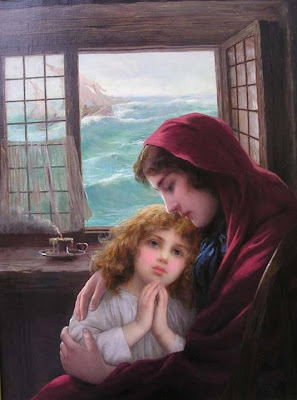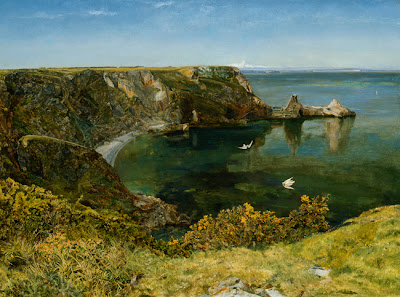Thursday, May 31, 2012
Victorian paints
A Victorian bladder of paint before tubes were invented. Some artists preferred glass jars. The bladders would have been made from pig membrane and tied at the top with strong twine to exclude air. Artists had a wide choice of pigments that came from minerals, precious stones, rocks, vegetables, insects and plants. Some of the new colours he used came about by the advances of modern chemistry. He used: lead white, zinc white, ultramarine ash, vermilion, chromium oxide, zinc yellow, chrome yellow, cobalt blue, Prussian blue, burnt sienna, Naples yellow, madder lake, ivory black and bone black. Greens were mixed greens of chrome yellow and Prussian Blue, possibly from a tube of green paint.
Artists would have mixed their oil paint (a mixture of pigment and oil) with another liquid to make the pigment more fluid and transparent. This liquid is called the medium and a common one used was copal medium, a resin (a sticky substance produced by trees) dissolved in oil (see image) to make the paint more fluid.
Before the introduction of ready-made paint, artists had to mix paint themselves.
Wednesday, May 30, 2012
“Notice Neptune, though . . . ” - John Liston Byam Shaw c. 1900
The Studio (1900)
This illustration to Robert Browning's “‘My Last Duchess” has the full title “Notice Neptune, though, / Taming a sea-horse, thought a rarity, / Which Claus of Innsbruck cast in bronze for me.’ Robert Browning. From a Watercolour by Byam Shaw, R.I.”
The artist has depicted the close of Browning's poem, which appropriately closes with the vicious duke's relating how he tamed his “last” wife, who now survives only in a work of art he owns, with the image of a work of art depicting another act of “taming.”
Tuesday, May 29, 2012
Vesta Tilley
Originally named Matilda Alice Powles (1864 – 1952), she was the most famous and well paid music hall male impersonator of her day. She was a star in both Britain and the United States for over thirty years. Her father was a comedy actor and sometimes theatre manager, and Tilley first appeared on stage at the age of three and a half. At the age of six she did her first role in male clothing under the name Pocket Sims Reeves, a parody of then-famous opera singer Sims Reeves. She would come to prefer doing male roles exclusively, saying that “I felt that I could express myself better if I were dressed as a boy”.
Monday, May 28, 2012
Sunday, May 27, 2012
Saturday, May 26, 2012
Friday, May 25, 2012
Thursday, May 24, 2012
Wednesday, May 23, 2012
Tuesday, May 22, 2012
Subscribe to:
Posts (Atom)















































_Fellowes_by_John_Singer_Sargent_(1856-1925).jpg)

